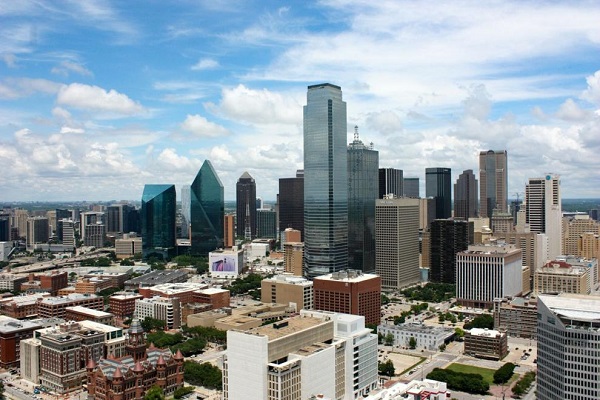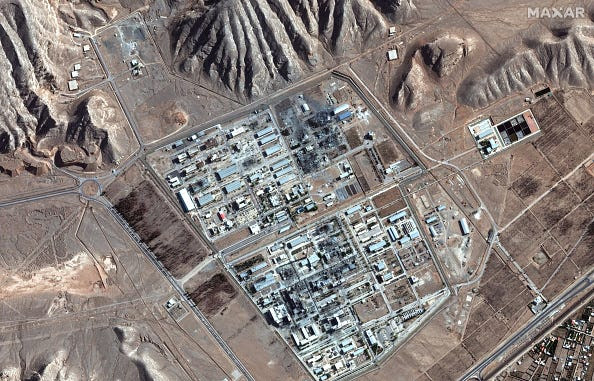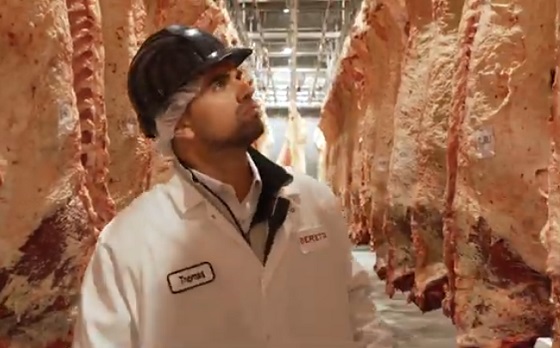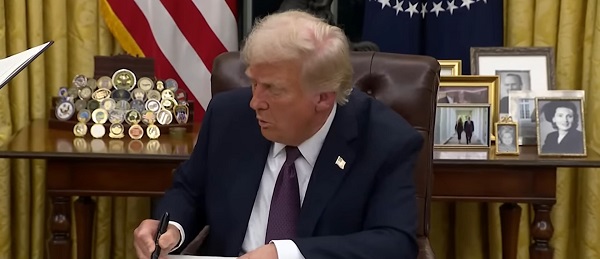Economy
Trudeau’s Economic Mismanagement Exposed: GDP Report Reveals Alarming Decline in Canadian Prosperity
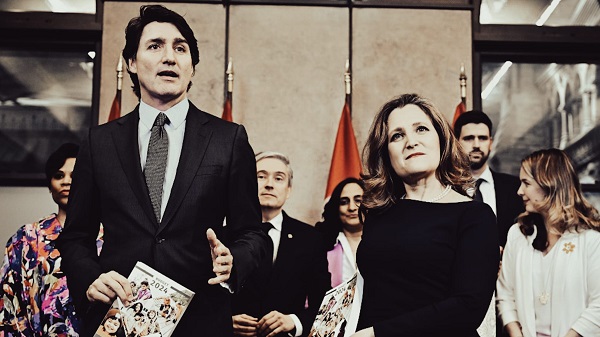
The latest “Gross Domestic Product, Income, and Expenditure: Third Quarter 2024” report highlights six consecutive declines in GDP per capita & collapsing business investment
Good evening my fellow Canadians, and welcome to the final chapter of Canada as a thriving economy, brought to you courtesy of Justin Trudeau. The latest GDP report isn’t just a spreadsheet of bad news—it’s a grim look at the devastation Trudeau has unleashed on Canada’s economy.
Here’s what they won’t tell you: while Trudeau prances around on the world stage, preaching about climate change and “equity,” the average Canadian is getting poorer. GDP per capita—one of the most telling measures of prosperity—has now declined for six consecutive quarters, hitting levels not seen since 2017. Let that sink in. Under Trudeau’s leadership, Canadians are worse off today than they were seven years ago.
Canada’s GDP Growth: A Sluggish Economy Falling Behind
The latest figures from Statistics Canada’s Gross Domestic Product, Income, and Expenditure: Third Quarter 2024 report show an economy struggling to find its footing. Real GDP grew by 0.3% in Q3 2024, a slowdown from the 0.5% growth in the first and second quarters of the year. On an annual basis, GDP growth for 2023 was a modest 1.1%, further highlighting Canada’s weak economic momentum.
In real terms, Canada’s GDP as of Q3 2024 stands at $2,419,572 million (chained 2017 dollars). While the economy continues to expand, this growth pales in comparison to the nation’s surging population.
GDP Per Capita Declines: A Warning Sign for Canadians
Canada’s economic growth is not keeping pace with its rapid population expansion. In Q3 2024, GDP per capita—arguably the most important measure of economic health—declined by 0.4%, marking the sixth consecutive quarterly drop. With a staggering 3.2% population growth in 2023, Canada’s economy cannot sustain the same level of prosperity for its citizens.
Current GDP per capita is estimated at ~$54,000, down from its pre-pandemic high of ~$58,100 in 2017, and 2.5% below 2019 levels. To return to its long-term trend, GDP per capita would need to grow at an ambitious 1.7% annually for the next decade, a rate well above the recent average of just 1.1% per year since 1981.
Historical Context: Long-Term Prosperity Eroded
The report shows a troubling trajectory in inflation-adjusted GDP per capita over decades:
- 1981: ~$36,900
- 2017: ~$58,100
- 2024: ~$54,000 (estimated due to consecutive declines).
Despite Canada’s resource wealth and economic potential, GDP per capita remains 7% below its historical growth trend, signaling systemic productivity and investment issues.
Key Drivers of GDP Growth in Q3 2024
The Q3 2024 report highlights the components influencing GDP growth:
- Household Spending: +0.9%
- Government Spending: +1.1%
- Business Investment in Machinery and Equipment: -7.8%
- Exports: -0.3%
- Imports: -0.1%
While household and government expenditures provided some lift, the steep decline in business investment—down nearly 8%—and weaker exports reveal structural weaknesses in Canada’s economic model.
A Warning for the Future
These numbers tell a grim story: Canada’s economic growth, when adjusted for its population explosion, is failing to provide real benefits to its citizens. GDP per capita declines, stagnant productivity, and plummeting business investment highlight the challenges ahead. Without dramatic improvements in productivity, competitiveness, and fiscal policy, Canada’s long-term economic prospects remain precarious.
Trudeau’s Population Bomb
In 2023, Canada’s population grew by a jaw-dropping 3.2%, adding over 1.27 million people—the size of Calgary—in just one year. Trudeau’s open-door immigration policy is out of control. But here’s the kicker: the economy isn’t keeping up. GDP growth is crawling at 0.3%, while GDP per capita—the number that actually reflects living standards—has fallen 2.5% below pre-pandemic levels.
What does this mean? Trudeau is creating a country where there are more people, but less wealth to go around. He’s importing voters for his political base while ignoring the basic economics of supply and demand. More people mean more pressure on housing, healthcare, and infrastructure—all of which are already in crisis. Trudeau gets the photo ops, and Canadians get poorer.
Productivity? What’s That?
Here’s the real scandal: Canada’s productivity is collapsing, and Trudeau couldn’t care less. Business investment in machinery and equipment—a cornerstone of economic growth—dropped 7.8% in Q3 2024. That’s not a blip. It’s part of a long-term trend.
Under Trudeau, Canada has become hostile to business. With punishing taxes, endless red tape, and policies designed to appease radical activists, companies have stopped investing. They’re pulling back because they see no future in a country run by a trust-fund prime minister who treats the economy like his personal virtue-signaling playground.
Exports Collapse, Government Spending Soars
Exports fell 0.3% this quarter, after a 1.4% drop the quarter before. That’s Canada losing its competitive edge, plain and simple. While Trudeau waxes poetic about “green transitions,” other countries are eating Canada’s lunch.
Meanwhile, Trudeau’s solution to every problem is predictable: throw money at it. Government spending rose 1.1% in Q3 2024, marking the third consecutive quarterly increase. But this isn’t investment—it’s waste. It’s billions spent on flashy programs that do nothing to address Canada’s fundamental economic problems.
The OECD Warning Trudeau Ignores
Here’s a fact Trudeau won’t tweet about: The Organization for Economic Co-operation and Development (OECD) projects that Canada will have the lowest GDP per capita growth of all member countries through 2060. That’s Trudeau’s legacy: turning Canada into the slowest-growing economy in the developed world.
This isn’t just incompetence—it’s deliberate. Trudeau’s agenda isn’t about making Canada prosperous; it’s about centralizing power. His policies crush the middle class, drive businesses out, and create dependence on government handouts.
The Final Verdict
Justin Trudeau has managed to take one of the most resource-rich, opportunity-filled countries in the world and drive it into economic stagnation. He’s turned Canada into a welfare state for the many and a playground for the elite. GDP per capita is falling, productivity is collapsing, and the future looks bleak for ordinary Canadians.
Let’s be clear: Trudeau doesn’t care. As long as he’s jet-setting to global conferences, virtue-signaling about climate justice, and securing his legacy as the darling of the global elite, the suffering of everyday Canadians is irrelevant to him.
Canada deserves better. It deserves leadership that values hard work, economic freedom, and the dignity of a prosperous nation. And until Trudeau is gone, don’t expect any of that.
Subscribe to The Opposition with Dan Knight .
For the full experience, upgrade your subscription.
Business
Trump confirms 35% tariff on Canada, warns more could come
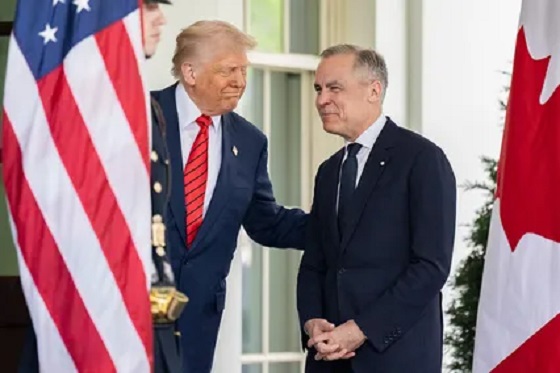
Quick Hit:
President Trump on Thursday confirmed a sweeping new 35% tariff on Canadian imports starting August 1, citing Canada’s failure to curb fentanyl trafficking and retaliatory trade actions.
Key Details:
- In a letter to Canadian Prime Minister Mark Carney, Trump said the new 35% levy is in response to Canada’s “financial retaliation” and its inability to stop fentanyl from reaching the U.S.
- Trump emphasized that Canadian businesses that relocate manufacturing to the U.S. will be exempt and promised expedited approvals for such moves.
- The administration has already notified 23 countries of impending tariffs following the expiration of a 90-day negotiation window under Trump’s “Liberation Day” trade policy.
Diving Deeper:
President Trump escalated his tariff strategy on Thursday, formally announcing a 35% duty on all Canadian imports effective August 1. The move follows what Trump described as a breakdown in trade cooperation and a failure by Canada to address its role in the U.S. fentanyl crisis.
“It is a Great Honor for me to send you this letter in that it demonstrates the strength and commitment of our Trading Relationship,” Trump wrote to Prime Minister Mark Carney. He added that the tariff response comes after Canada “financially retaliated” against the U.S. rather than working to resolve the flow of fentanyl across the northern border.
Trump’s letter made clear the tariff will apply broadly, separate from any existing sector-specific levies, and included a warning that “goods transshipped to evade this higher Tariff will be subject to that higher Tariff.” The president also hinted that further retaliation from Canada could push rates even higher.
However, Trump left the door open for possible revisions. “If Canada works with me to stop the flow of Fentanyl, we will, perhaps, consider an adjustment to this letter,” he said, adding that tariffs “may be modified, upward or downward, depending on our relationship.”
Canadian companies that move operations to the U.S. would be exempt, Trump said, noting his administration “will do everything possible to get approvals quickly, professionally, and routinely — In other words, in a matter of weeks.”
The U.S. traded over $762 billion in goods with Canada in 2024, with a trade deficit of $63.3 billion, a figure Trump called a “major threat” to both the economy and national security.
Speaking with NBC News on Thursday, Trump suggested even broader tariff hikes are coming, floating the idea of a 15% or 20% blanket rate on all imports. “We’re just going to say all of the remaining countries are going to pay,” he told Meet the Press moderator Kristen Welker, adding that “the tariffs have been very well-received” and noting that the stock market had hit new highs that day.
The Canadian announcement is part of a broader global tariff rollout. In recent days, Trump has notified at least 23 countries of new levies and revealed a separate 50% tariff on copper imports.
“Not everybody has to get a letter,” Trump said when asked if other leaders would be formally notified. “You know that. We’re just setting our tariffs.”
Business
UN’s ‘Plastics Treaty’ Sports A Junk Science Wrapper
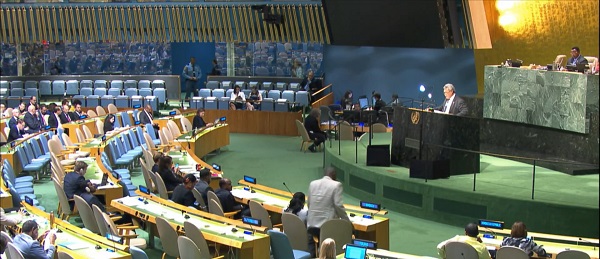

From the Daily Caller News Foundation
By Craig Rucker
According to a study in Science Advances, over 90% of ocean plastic comes from just 10 rivers, eight of which are in Asia. The United States, by contrast, contributes less than 1%. Yet Pew treats all nations as equally responsible, promoting one-size-fits-all policies that fail to address the real source of the issue.
Just as people were beginning to breathe a sigh of relief thanks to the Trump administration’s rollback of onerous climate policies, the United Nations is set to finalize a legally binding Global Plastics Treaty by the end of the year that will impose new regulations, and, ultimately higher costs, on one of the world’s most widely used products.
Plastics – derived from petroleum – are found in everything from water bottles, tea bags, and food packaging to syringes, IV tubes, prosthetics, and underground water pipes. In justifying the goal of its treaty to regulate “the entire life cycle of plastic – from upstream production to downstream waste,” the U.N. has put a bull’s eye on plastic waste. “An estimated 18 to 20 percent of global plastic waste ends up in the ocean,” the UN says.
As delegates from over 170 countries prepare for the final round of negotiations in Geneva next month, debate is intensifying over the future of plastic production, regulation, and innovation. With proposals ranging from sweeping bans on single-use plastics to caps on virgin plastic output, policymakers are increasingly citing the 2020 Pew Charitable Trusts report, Breaking the Plastic Wave, as one of the primary justifications.
But many of the dire warnings made in this report, if scrutinized, ring as hollow as an empty PET soda bottle. Indeed, a closer look reveals Pew’s report is less a roadmap to progress than a glossy piece of junk science propaganda—built on false assumptions and misguided solutions.
Pew’s core claim is dire: without urgent global action, plastic entering the oceans will triple by 2040. But this alarmist forecast glosses over a fundamental fact—plastic pollution is not a global problem in equal measure. According to a study in Science Advances, over 90% of ocean plastic comes from just 10 rivers, eight of which are in Asia. The United States, by contrast, contributes less than 1%. Yet Pew treats all nations as equally responsible, promoting one-size-fits-all policies that fail to address the real source of the issue.
This blind spot has serious consequences. Pew’s solutions—cutting plastic production, phasing out single-use items, and implementing rigid global regulations—miss the mark entirely. Banning straws in the U.S. or taxing packaging in Europe won’t stop waste from being dumped into rivers in countries with little or no waste infrastructure. Policies targeting Western consumption don’t solve the problem—they simply shift it or, worse, stifle useful innovation.
The real tragedy isn’t plastic itself, but the mismanagement of plastic waste—and the regulatory stranglehold that blocks better solutions. In many countries, recycling is a government-run monopoly with little incentive to innovate. Meanwhile, private-sector entrepreneurs working on advanced recycling, biodegradable materials, and AI-powered sorting systems face burdensome red tape and market distortion.
Pew pays lip service to innovation but ultimately favors centralized planning and control. That’s a mistake. Time and again, it’s been technology—not top-down mandates—that has delivered environmental breakthroughs.
What the world needs is not another top-down, bureaucratic report like Pew’s, but an open dialogue among experts, entrepreneurs, and the public where new ideas can flourish. Imagine small-scale pyrolysis units that convert waste into fuel in remote villages, or decentralized recycling centers that empower informal waste collectors. These ideas are already in development—but they’re being sidelined by policymakers fixated on bans and quotas.
Worse still, efforts to demonize plastic often ignore its benefits. Plastic is lightweight, durable, and often more environmentally efficient than alternatives like glass or aluminum. The problem isn’t the material—it’s how it has been managed after its use. That’s a “systems” failure, not a material flaw.
Breaking the Plastic Wave champions a top-down, bureaucratic vision that limits choice, discourages private innovation, and rewards entrenched interests under the guise of environmentalism. Many of the groups calling for bans are also lobbying for subsidies and regulatory frameworks that benefit their own agendas—while pushing out disruptive newcomers.
With the UN expected to finalize the treaty by early 2026, nations will have to face the question of ratification. Even if the Trump White House refuses to sign the treaty – which is likely – ordinary Americans could still feel the sting of this ill-advised scheme. Manufacturers of life-saving plastic medical devices, for example, are part of a network of global suppliers. Companies located in countries that ratify the treaty will have no choice but to pass the higher costs along, and Americans will not be spared.
Ultimately, the marketplace of ideas—not the offices of policy NGOs—will deliver the solutions we need. It’s time to break the wave of junk science—not ride it.
Craig Rucker is president of the Committee For A Constructive Tomorrow (www.CFACT.org).
-

 Business2 days ago
Business2 days ago‘Experts’ Warned Free Markets Would Ruin Argentina — Looks Like They Were Dead Wrong
-

 International2 days ago
International2 days agoSecret Service suspends six agents nearly a year after Trump assassination attempt
-

 Automotive2 days ago
Automotive2 days agoAmerica’s EV Industry Must Now Compete On A Level Playing Field
-
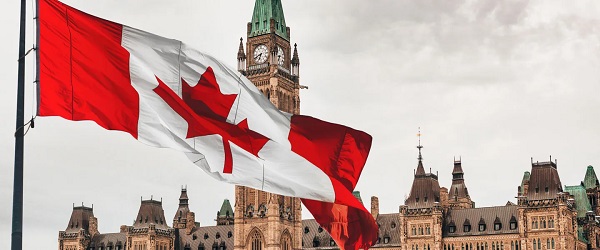
 Business2 days ago
Business2 days agoCarney government should recognize that private sector drives Canada’s economy
-

 Alberta1 day ago
Alberta1 day agoAlberta school boards required to meet new standards for school library materials with regard to sexual content
-
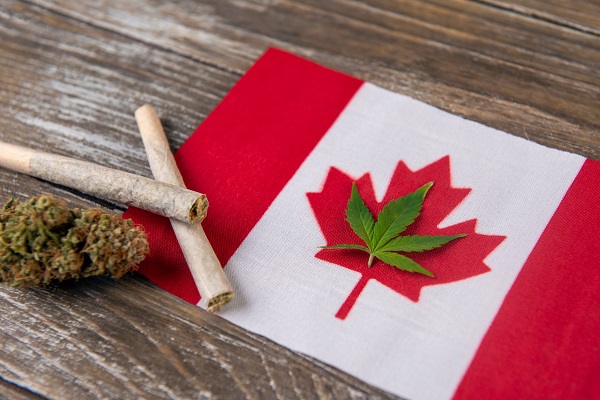
 Business2 days ago
Business2 days agoCannabis Legalization Is Starting to Look Like a Really Dumb Idea
-

 Bruce Dowbiggin2 days ago
Bruce Dowbiggin2 days agoThe Covid 19 Disaster: When Do We Get The Apologies?
-

 Alberta1 day ago
Alberta1 day agoFourteen regional advisory councils will shape health care planning and delivery in Alberta


